Leoncillo

© Galleria d'Arte Maggiore G.A.M., Bologna/Milano | Leoncillo, Amanti antichi, 1965, terracotta smaltata, cm. 80x180x40
Dal 27 January 2018 al 31 March 2018
Bologna
Luogo: Galleria d'Arte Maggiore G.A.M.
Indirizzo: via Massimo D'Azeglio 15
Orari: lunedì dalle 16 alle 19.30; dal martedì al sabato dalle 9 alle 12.30 e dalle 16 alle 19.30
Costo del biglietto: Ingresso gratuito
Telefono per informazioni: +39 051 235843
E-Mail info: info@maggioregam.com
Sito ufficiale: http://www.maggioregam.com
Studiando un allestimento nuovo e suggestivo, la Galleria d'Arte Maggiore g.a.m. offre al pubblico l'occasione di riscoprire tutta la forza espressiva di alcuni dei capolavori indiscussi di Leoncillo, tra cui emerge la straordinaria scultura “Amanti Antichi” del 1965. Allestita nell'insolita oscurità nel salone proncipale della Galleria, l'opera riprende un celebre topos etrusco, quello del «sarcofago degli sposi», rielaborato dall'artista nello stile informale che gli è più consono e in cui può convogliare l'intenso travaglio interiore che lo ha sempre guidato nel suo fare arte. L'esposizione alla Galleria d'Arte Maggiore g.a.m., che è anche sede dell'Archivio del Maestro, è arricchita da una selezione di ulteriori importanti sculture e lavori su carta, capaci di creare tra loro dialoghi profondi e di restituire un ritratto più completo di uno dei più intensi artisti del XX secolo.
Nato a Spoleto nel 1915, la carriera artistica di Leoncillo è già pienamente avviata a partire dagli anni Quaranta quando partecipa alla VII Triennale di Milano su invito di Gio Ponti e quando firma, nel 1947, il manifesto della Nuova Secessione Artistica Italiana, diventata poi Fronte Nuovo delle Arti, che si distingue per l'attenzione alla modernità che pervade l'Italia del dopoguerra e l'apertura al dialogo con l'Europa. É Alberto Moravia a notare durante la prima mostra del collettivo l'arte “difficile e singolare” di ispirazione neo-cubista di Leoncillo, ben presto protagonista di sei edizioni della Biennale di Venezia a partire dal 1948, la più memorabile delle quali rimane la storica partecipazione nel 1954 in cui gli viene dedicata una sala isieme a Lucio Fontana. Due anni dopo, nel 1956, Leoncillo è chiamato a realizzare il Monumento ai Caduti di tutte le guerre di Albissola Marina, una silenziosa testimonianza fatta di statue che si aggirano come fantasmi su un basamento vuoto, di cui la Galleria d'Arte Maggiore g.a.m. espone in mostra un pregevole bozzetto. Proprio in quegli anni, Leoncillo vive un periodo di profonda crisi esistenziale, ideologica e artistica, che si trasforma in una svolta fondamentale per la sua maturazione, portandolo ad abbandonare il linguaggio post-cubista a favore di quelle informale, e a creare opere volte a restituire l'emozione e il senso della natura. Sculture come l'intenso Taglio rosso del 1963, sospeso tra metafora e memoria, e la selezione dei lavori su carta presenti in mostra mettono in luce come l'artista sia riuscito a trovare proprio in questo linguaggio lo strumento più adatto ad esprimere la lotta profonda e continua che lo anima e che lo consacra al successo internazionale con esposizioni a Parigi, New York, Lubiana, Napoli e a Montréal a parire dai primi anni '60.
A questo periodo appartiene l'opera protagonista della mostra, i già citati Amanti antichi. L'ispirazione è tratta dal sarcofago degli sposi di Cerveteri, dove tanto aulico è il desiderio di preservare l'amore dei due amati nell'eternità, quanto palese e struggente ne è la corruzione da parte della storia nella rielaborazione che ne fa l'artista. Metafora del tempo, dell'amore e della morte, l'opera rivela, come spiega Claudio Spadoni, la “traccia della corrosione, di un tempo che assembla le cose, la vita organica e mondo inorganico. [...] Il naturale e il non naturale si intersecano, si fondono e si confondono, solidificati in presenze ove il passato è recuperato ad una condizione esistenziale di una cosapevolezza estrema. La consapevolezza della solitudine umana, di un destino individuo, che si consuma e rimane come traccia corrosa, nel succedersi degli eventi, nella totalità del reale.” L'opera è stata per lunghi anni concessa in comodato al Ministero degli Affari Esteri a Roma ed è stata esposta in importanti mostre in Italia e all'estero, come INTUITION presso il Museo di Palazzo Fortuny durante l'ultima edizione della Biennale di Venezia, solo per citare la più recente.
Leoncillo scompare improvvisamente il 3 settembre 1968, lasciando memoria della sua poetica anche nelle preziose pagine del Piccolo Diario, in cui rivivere ancora una volta attraverso le sue parole tutta l'intensità emotiva del suo lavoro: “Creta, creta mia, materia mia artificiale, ma carica per metafora di tutto ciò che ho visto, amato, di ciò a cui sono stato vicino, delle cose che ho dentro, con cui, in fondo, mi sono, volta per volta, identificato."
SCARICA IL COMUNICATO IN PDF
COMMENTI

-
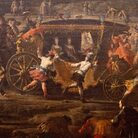 Dal 20 December 2025 al 20 April 2026
Caserta | Reggia di Caserta
Dal 20 December 2025 al 20 April 2026
Caserta | Reggia di Caserta
Regine: trame di cultura e diplomazia tra Napoli e l’Europa
-
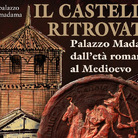 Dal 19 December 2025 al 23 March 2026
Torino | Palazzo Madama - Museo Civico d’Arte Antica
Dal 19 December 2025 al 23 March 2026
Torino | Palazzo Madama - Museo Civico d’Arte Antica
Il castello ritrovato. Palazzo Madama dall’età romana al medioevo
-
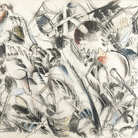 Dal 17 December 2025 al 19 January 2026
Roma | Palazzo della Cancelleria
Dal 17 December 2025 al 19 January 2026
Roma | Palazzo della Cancelleria
De Humana Mensura di Linda Karshan
-
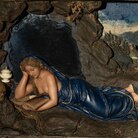 Dal 18 December 2025 al 12 April 2026
Firenze | Gallerie degli Uffizi
Dal 18 December 2025 al 12 April 2026
Firenze | Gallerie degli Uffizi
Cera una volta. Sculture dalle collezioni medicee
-
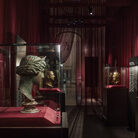 Dal 11 December 2025 al 9 April 2026
Firenze | Museo Archeologico Nazionale di Firenze
Dal 11 December 2025 al 9 April 2026
Firenze | Museo Archeologico Nazionale di Firenze
Icone di Potere e Bellezza
-
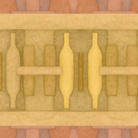 Dal 11 December 2025 al 11 January 2026
Roma | Palazzo Esposizioni Roma
Dal 11 December 2025 al 11 January 2026
Roma | Palazzo Esposizioni Roma
Giorgio Morandi nella Collezione Eni. Un viaggio attraverso la storia culturale del cane a sei zampe e l’eredità di Enrico Mattei


